Q&A: PBM Unbundling, New Pricing Models Create More Transparency
Morgan Lee, PhD, MPH, CPH, and Scott Halperin, PharmD, from the Pharmaceutical Strategies Group, discuss how the role of PBMs in plan design is evolving.
As health plans move away from traditional pharmacy benefit manager (PBM) pricing models, experts believe more transparency will be introduced within the benefits market. With cost-plus models and PBM unbundling highlighted in the 2025 Trends in Drug Benefit Design Report, authors of the report are seeing an evolution in the way drug benefits are facilitated.
“Plans today are really seeking additional flexibility in administering their plan,” said Scott Halperin, PharmD, senior pharmacy benefit clinical consultant of employer groups at the Pharmaceutical Strategies Group (PSG). “Perhaps they want to drive toward an in-house pharmacy, like we see with many hospital systems, or just really looking to gain more transparency into where their spend is going.”
Along with his colleague, Morgan Lee, PhD, MPH, CPH, PSG’s senior director of research and strategy, the experts shared their insights into the evolving role of PBMs in drug benefit design. As contributors to the PSG’s 2025 report, the 2 provided expertise into the importance of the report and what it means for industry stakeholders.
In this part of the interview, Halperin and Lee caught up with Drug Topics to discuss the emergence of PBM unbundling and alternative pricing models.
READ MORE:
Drug Topics: What is PBM unbundling and why is it gaining traction now?
Scott Halperin: It's really carving out the core functions of the PBM. We talk about the core functions of a PBM: it's adjudicating the claim; providing network contracts; coordinating between the mail-order or home-delivery vendor, the specialty vendor; and then it's collecting rebates or aggregating rebates with the pharmaceutical manufacturers. Why is it gaining traction now? Well, plans today are really seeking additional flexibility in administering their plan. Perhaps they want to drive toward an in-house pharmacy, like we see with many hospital systems, or just really looking to gain more transparency into where their spend is going.
Morgan Lee: I'll jump in and say it's really interesting that we saw this first, really, in the health plan space. But in this year's report, we found quite a bit of interest among employers as well, and that may look like different flavors. Employers may not be ready to fully unbundle but they may look at carving out certain pieces of that solution. But in the report, we found very high interest in perceived value of that unbundling approach. Transparency was one of the main benefits that payers felt that they could get from this approach. I think that was really interesting.
Drug Topics: What are some examples of alternative PBM pricing models and how do you see the role of these new models evolving in the near future?
Scott Halperin: We see a couple different pricing models currently out here in the market. First one is really cost-plus pricing. Typically, when we think of PBM pricing models, we think of…traditional pricing, or spread pricing. [What the] plan pays to the PBM is different than the amount that the PBM collects from the pharmacy. Now, we're seeing the markup tied to a fixed fee. We're also seeing pass-through pricing, where there is no spread being charged to the plan from the PBM. In addition, we're seeing things called a PMPM pricing guarantee. These are for plans that are looking for more clarity. They're looking for more guarantees with their spend and trend. So, we're seeing some PBMs come to the table with a PMPM, per member per month, trend guarantee out there in the market.
Morgan Lee: We are already seeing quite a bit of engagement with pass-through pricing, but we're also starting to see quite a few payers who are evaluating cost-plus or PMPM pricing guarantees. I think it'll be interesting to see how that continues to move in the future. It does seem like we'll continue seeing engagement there. And Scott, I think you're seeing this with clients as well; that leaning toward a continued evaluation and perhaps use of these models.
Scott Halperin: A lot of it has to do with the state and federal legislation that is coming down. [It] depends on the state that you're in. We have clients that run multi-state ERISA plans. But some of these states are banning the traditional pricing or spread-pricing model. That is leading clients [and] payers to really look at more of the pass-through model, or an acquisition, or a cost-plus model that really future-proofs their benefit.
READ MORE:
Are you ready to elevate your pharmacy practice? Sign up today for our
Reference
2025 trends in drug benefit design report. Pharmaceutical Strategies Group. June 10, 2025. Accessed June 23, 2025. https://www.psgconsults.com/industry-report/2025-trends-in-drug-benefit-design-report/
Newsletter
Pharmacy practice is always changing. Stay ahead of the curve with the Drug Topics newsletter and get the latest drug information, industry trends, and patient care tips.


















































































































































